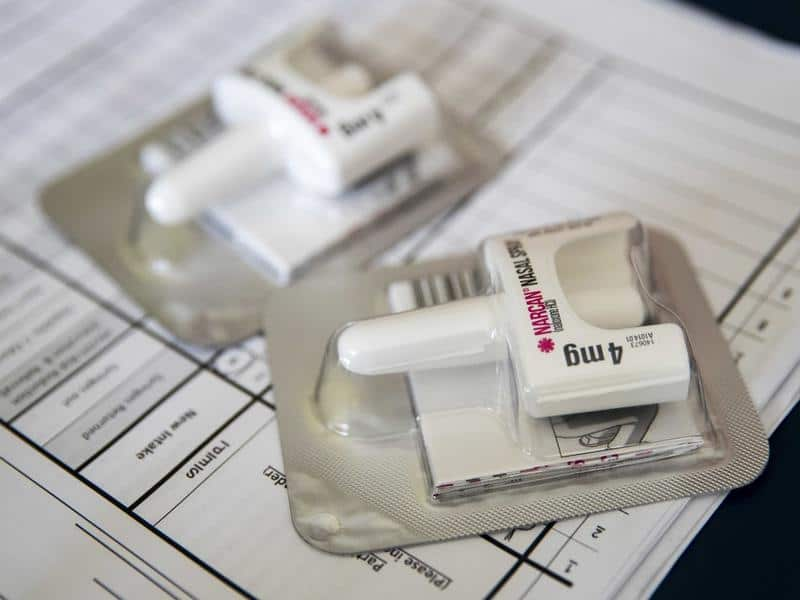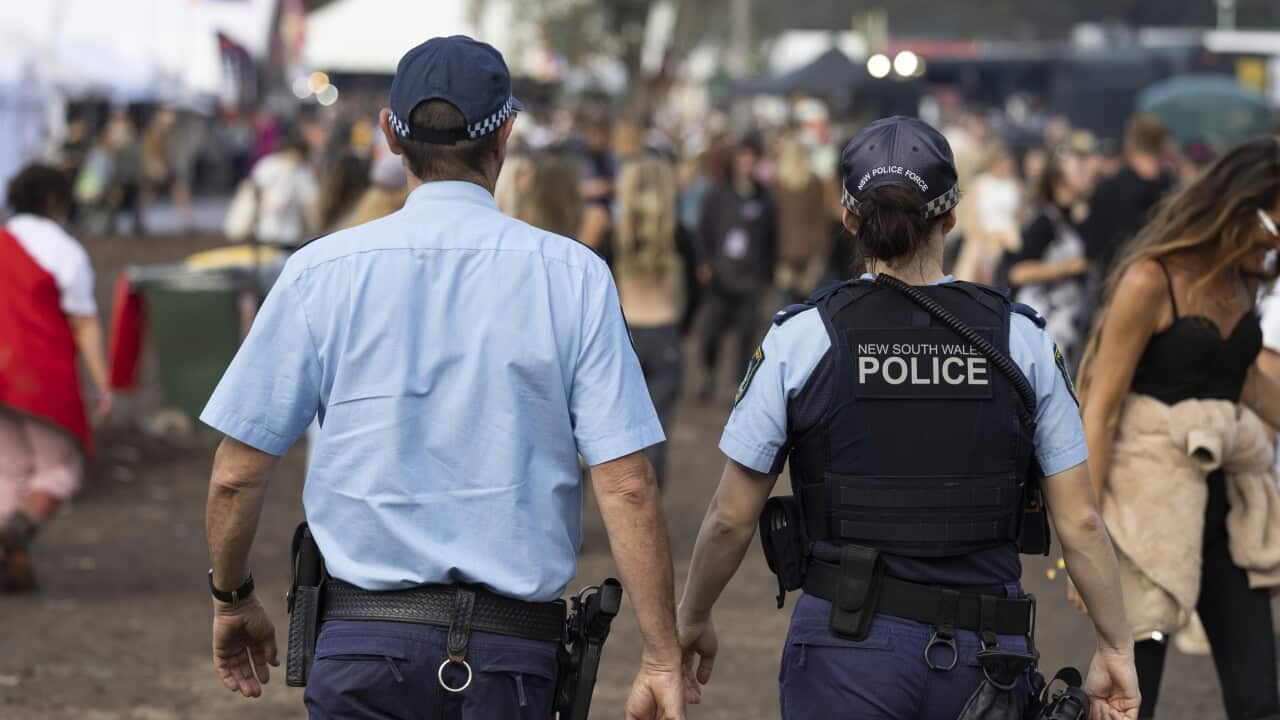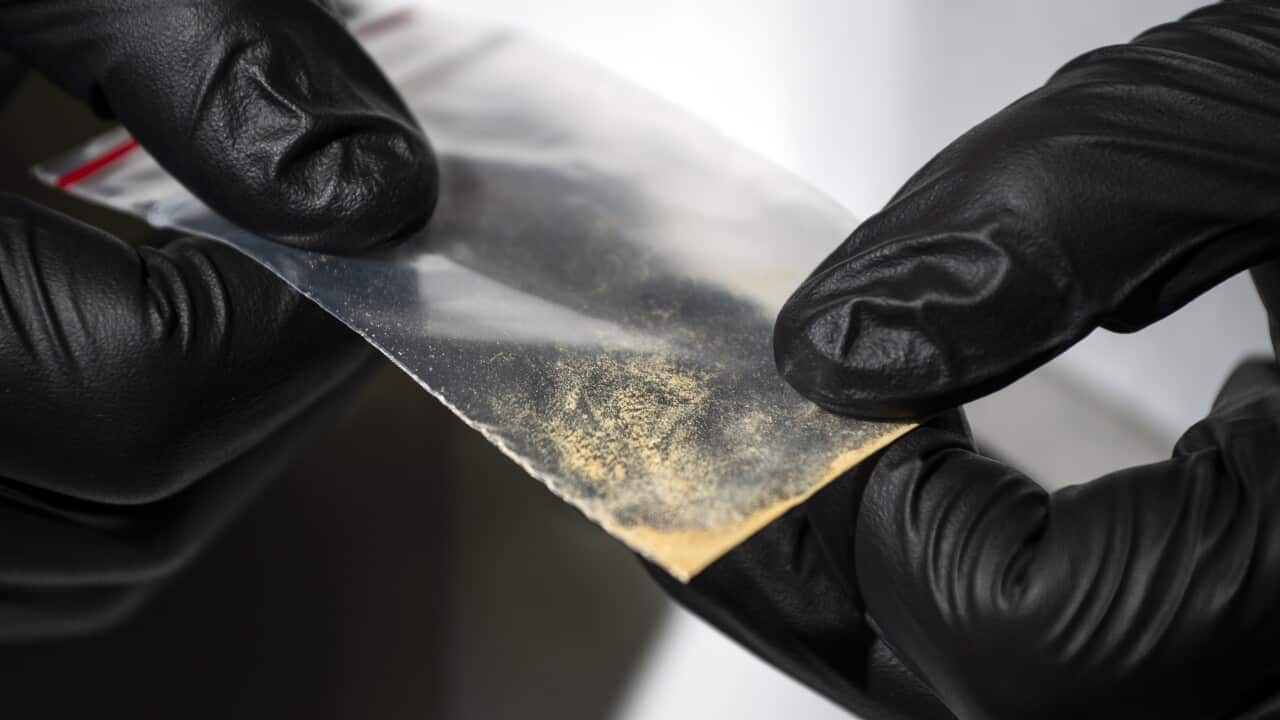Drug overdose deaths are rising in Australia and synthetic drugs like synthetic heroin entering the illegal drug supply chain may be one of the causes.
"It really feels like the market is shifting," Dr Hester Wilson, the chair of the Royal Australian College of General Practitioners' Addiction Special Interest Group, told The Feed.
"In Canada and in the [United] States, illicit fentanyl has taken over there. We really thought that might happen in Australia but it hasn't. What we’re now seeing is nitazenes (a drug stronger than fentanyl). It's low levels at the moment but it is concerning that we may see more of this very potent opioid."

Multiple health services have shared warnings with the public to be aware of synthetic-laced drugs that have caused unintentional overdoses. Credit: Source: Instagram/NSW Health, CANtest
Drugs laced with synthetics caused two unintentional deaths this month
earlier this month after two people died and two more were hospitalised from overdoses after taking cocaine that had been laced with a synthetic opioid — more potent than non-synthetic heroin.
The warning urged people to make use of the federal government’s , which offers the life-saving opioid overdose reversal drug called naloxone for free in hundreds of pharmacies nationwide, as well as alcohol and drug treatment centres. It said users of non-opiate drugs including cocaine and MDMA should also have naloxone on hand.
This followed a similar public drug warning in April when nitazenes, a potent class of synthetic opioid, were in NSW.
Nitazenes have also been detected in drug samples tested at Canberra's CanTEST Health and Drug Checking Service over the last two years. Some have been found in opiate medicines, while others were detected in samples presented as heroin.
Drug-induced deaths in Australia were almost double the national road toll in 2022 and jumped to 2,356, up 79 compared to 2021, according to Australia's latest Annual Overdose Report by Penington Institute, which has been collecting overdose data for almost a decade.
Opioids were the most common drugs involved in unintentional deaths and the greatest increase was in deaths that involved heroin, which surged by almost 40 per cent.
Almost 80 per cent of all drug overdose deaths were unintentional and therefore may have been preventable.
The report cited a lack of awareness and harm reduction measures as key issues, but public health experts and bodies have also warned rising cases of synthetic opioids found in a range of illicit substances, including non-opioids like cocaine, methamphetamine and MDMA, are causing harm.
Penington Institute advocates for a comprehensive overdose prevention strategy that includes "removing barriers to medication-assisted opioid treatment" and "implementing drug checking at festivals and in communities".
So what are synthetic drugs and why have they been linked to recent overdose deaths?
What are synthetic drugs?
Synthetic means a product man-made by chemical synthesis. The way synthetic fabrics mimic natural fabrics, synthetic drugs mimic the chemical structures of already existing drugs.
Synthetic drugs are manufactured. They’re made in a lab.Dr Hester Wilson
"There are new ones coming out all the time and they sit in different substance classes … they have different effects," says Wilson.
And synthetic drugs, also known as new psychoactive substances, can be made to mimic any type of drug. or synthetic cannabis have been sold and taken worldwide in many forms.
Phenethylamines are another common class of psychoactive drug that includes methamphetamine and MDMA. They can be manufactured anywhere in the world without any natural ingredients and are easy to transport in small quantities due to their potency.
But recreational use of synthetic opioids is causing fresh concern among health and drug experts.
They're easy and cheap to produce because you don’t have to grow them. You can make them in the lab and with a bit of tweaking you can change their potency or the length of time they affect people. We're seeing an increasing number of novel substances being available on the informal drug markets.Dr Hester Wilson
Heroin, fentanyl and nitazenes — what's the difference?
Heroin is an opiate drug that is made from a natural extract of the seed of a variety of opium poppy plants. In medicine, opiates such as morphine and codeine are used to relieve pain.
Opiate drugs are naturally derived and include drugs like heroin and morphine, whereas opioid drugs are synthetically made and include drugs like fentanyl and oxycodone.
Opiates and opioids are depressant drugs, meaning they slow down the signals between the brain and parts of the body. The symptoms of an opiate or opioid overdose include sedation to the point of being unable to be roused, unconsciousness, slowed breathing, pinpoint pupils and blue fingers or lips due to a lack of oxygen.
Fentanyl is synthetic — an opioid created in 1959 for surgical pain relief. It doesn't contain any opium but it has a similar chemical structure to morphine and is widely used in healthcare because it is more concentrated — about 50 to 100 times stronger.
. In July, protonitazenes, which can be toxic or lethal in very small amounts, were discovered in cocaine samples tested in Melbourne.
Are synthetic drugs more dangerous?
"The issue with a lot of synthetics is they’re quite potent and therefore can have greater effects or more side effects," Wilson said.
When a novel substance, unknown to or disguised from the user, is potent, it can take just a small amount to cause adverse or undesired effects. Mismeasurement of the dose can come mistakenly from the consumer or carelessly from the supply chain due to synthetic drugs' relative accessibility and affordability.
Wilson also said non-lethal overdoses can have tragic outcomes. For example, people may be taking other drugs recreationally that are laced with non-lethal amounts of nitazenes and then developing opioid dependency without realising.
They come to hospital going 'I don't know what’s happening, I feel terrible,' and they've actually got withdrawal symptoms from opioids.Dr Hester Wilson
"So we need to manage the withdrawal but also potentially put them onto long-acting opiates as part of an opiate treatment program," she said.
Similarly, people can suffer an opioid overdose where the lack of oxygen in their body from prolonged slowed breathing can cause significant or life-long damage to the brain, heart or limbs where blood circulation may be compromised.
"Dying is a tragedy but so is having some ongoing impairment in your brain or heart because you haven’t had enough oxygen in your system," Wilson said.
Is there a way to tell if a substance contains synthetic drugs?
Penington Institute's director of research Dr Jake Dizard said novel synthetic substances are hard to spot because, due to their potency, they are often mixed with fillers.
"There's a high risk of contamination or substitution during production, making unexpected or unwanted drugs nearly impossible to detect by the naked eye," he said.
"Drug checking services offer the best way to identify substances, but these are currently only available in Queensland and the ACT, with a Victorian trial pending."
NSW’s first drug testing initiative ran earlier this year as a four-month trial for already registered clients of the Kings Cross medically supervised injecting room, but successive governments have repeatedly dismissed calls for pill testing trials despite .
NSW Premier Chris Minns said he wouldn't make any decisions to introduce pill testing until after the state's drug summit due in October. Similarly, Western Australia, South Australia, the NT and Tasmania have no plans to introduce drug testing trials.
Home testing kits are another option, but Dizard said they have several limitations and require expertise to interpret results. On top of that, fentanyl strips wont detect the presence of other synthetic opioids.
What can the public and governments do to reduce synthetic drug harm?
"Whenever possible, people should test their drugs and expanding drug checking services is a crucial policy priority so that people can make informed choices about using drugs and receive health messaging from trained, experienced staff," Dizard said.
But drug checking isn't always available in settings where drugs are consumed, so more awareness is needed of the risks, the signs of overdose, and how to seek help at the first signs of trouble.
Carrying naloxone or having it at home is increasingly important, he said, amid multiplying reports of potent synthetic opioids being unexpectedly present in drugs such as cocaine.
The $19.6 million (over four years) Naloxone Take Home program was launched by the federal government in July 2022 to make the potentially life-saving drug free without a prescription or a Medicare card in pharmacies nationwide. It was intended for "anyone who may experience, or witness, an opioid overdose or adverse reaction".
How does naloxone work and when and how should it be used?
Naloxone is a life-saving medication that temporarily , including those involving synthetic opioids. It blocks opioids in the brain allowing the person to breathe. But Dizard said naloxone is just one component of managing an overdose: it is also vital to call an ambulance.
A dose of naloxone via nasal spray or injection takes one to two minutes to take effect but only lasts up to 90 minutes. And opioid effects could last hours so the person cannot be left alone even after a naloxone dose.
"Give them naloxone they will wake up, they won't wake up totally because it's quite a small dose, but it takes the tip off that and wakes them up enough," Wilson said.

Naloxone - which can be injected or used in a nasal spray form - can reverse opioid overdoses. (AAP)
There are minimal risks associated with naloxone and it can be given to anyone anytime an opioid overdose is suspected.
"It should be included in all first aid kits and available in a wide range of public spaces," Dizard said.
"Anyone who knows someone who uses prescribed opioids, any type of illegal drugs, or might witness an overdose in the community should seek to access this medication for free through the national Take Home Naloxone program."
To access free and confidential advice about alcohol and other drugs, phone the National Alcohol and Other Drug Hotline on 1800 250 015.












